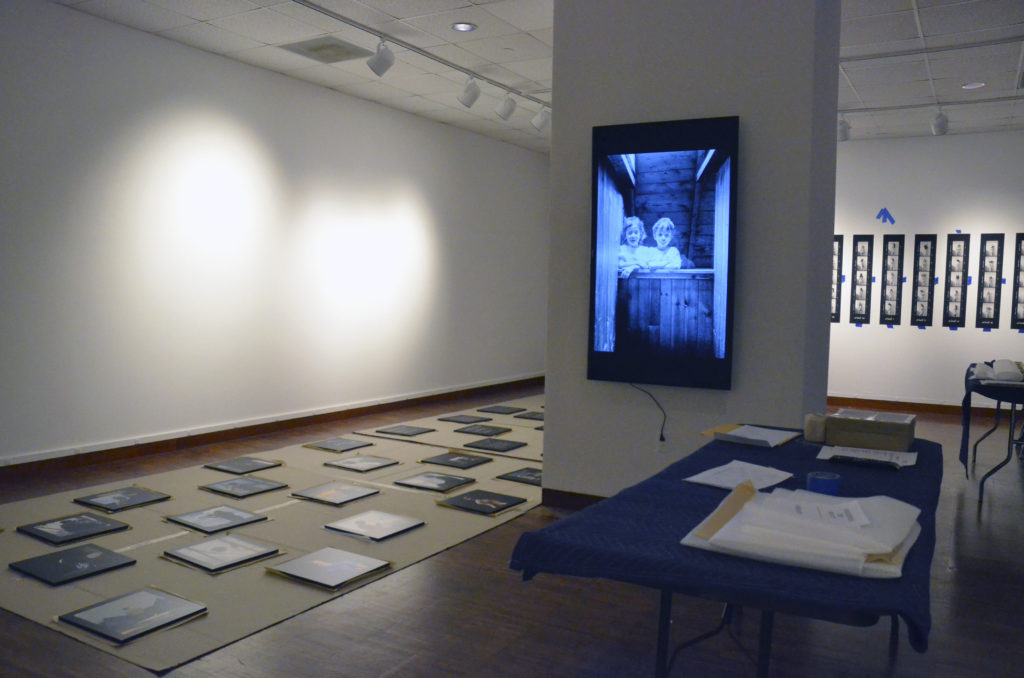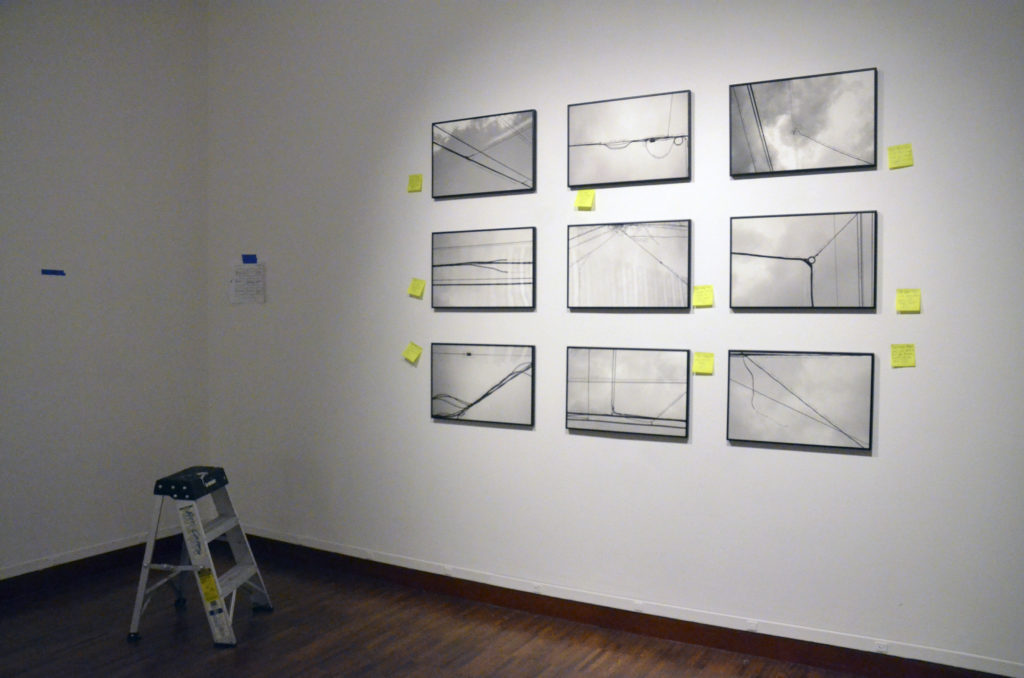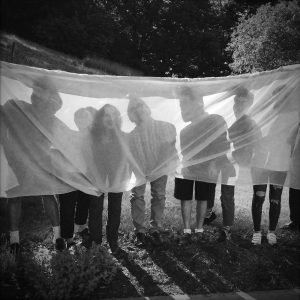To say that I have been buried in the preparations for this show the past few months is to make a gross understatement. The pace has been non-stop, but it has all come together without any last-minute disasters, which is a miracle. I went down to the Alice F. and Harris K. Weston Art Gallery today to help with the layout of the work as it is installed. Since virtually none of this work has ever been exhibited before, I am beyond nervous as to the impact it will have once it is all up.

The show consists of 6 different bodies of work. Will all of those series make sense when seen together in the same space? Does the order and presentation of the work help the viewer make sense of it? Is it a problem that 2 of the series are in color and 4 are in black & white? Or that two series are presented as videos and 4 consist of still images? Does anything need rethinking for future exhibitions? What's missing that could make it stronger?

Only about half of the work was up today, and none of the labels were done, so it was hard for me to answer those questions. I'm going back tomorrow to look things over again, and might get a better sense of it then.

